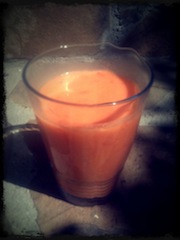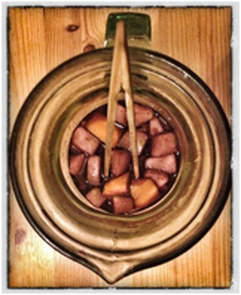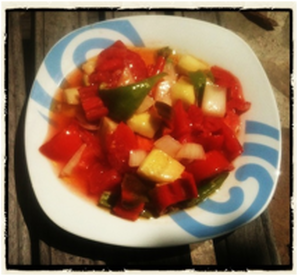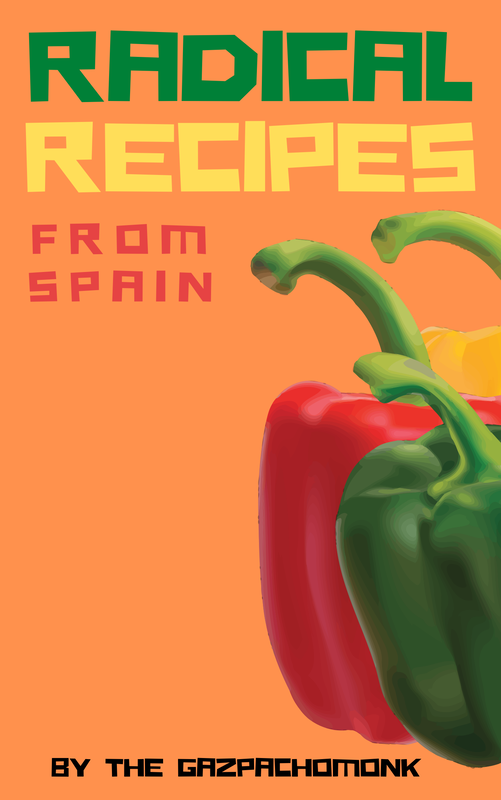 "DE GAZPACHO NO HAY EMPACHO" "You can't get enough of a good thing" explains this popular saying and certainly during the summer months I'm not sure I could aguantar (tolerate) the heat of this peninsula without a glass of Gazpacho at my side, so much that I have come to believe that is the DNA of Iberian cuisine. Unfortunately, ask 100 people how best to make the dish and you will get 100 different replies. There are so many variations in quantities and even ingredients that it is almost impossible to provide the definitive gazpacho recipe. Luckily for you, the Gazpachomonk has been investigating..... The History of GazpachoThe origin of the word gazpacho is uncertain; some say it may be derived from the Mozarab word 'caspa', meaning 'residue' or 'fragments', possibly referring to the chopped vegetables or small chunks of bread that are added to the soup. Others have suggested it comes from the Hebrew word 'gazaz,' meaning again, to break into pieces. Gazpacho under the RomansOne story about the origins of gazpacho was that it was introduced by Roman road builders who used a basic version consisting of bread, water, oil and garlic to not only keep cool, but also nourish themselves during the hot and demanding work. Obviously, this basic version did not contain the tomatoes or peppers that were to be added later. This would come after the conquest of the Americas. Gazpacho RecipeGazpacho can include:
Provided you use the same basic ingredients of mature tomatoes and good olive oil, then you will produce a marvellous liquid salad for those sweltering times of the year when solid foods become far less appetising. Gazpacho is one of those raw food dishes that seemingly offer little when broken up into its separate parts, but combine them together in the correct proportions and you create something very special: A revitalising, isotonic drink, low in calories which is considered (quite rightly) to be liquid gold in the mid heat of an Andalusian summer. Gazpacho: Serving Suggestions
More Recipes from Spain
The Recipe and Origins of Sangria The origins of this seasonal beverage can be as misty as the drink itself when the fruit wedges and floating spices are stirred by an appropriate length spoon. It has been argued amongst some English-speaking communities that the drink originated somewhere in the British Bahamas, but outside this colonial frame of mind it is considered that Sangria first appeared from the middle of the 19th century during the massive emigration from Iberia to Argentina - where the drink still enjoys a popularity today. In Argentina, the new immigrants were thought to have introduced the cooler and diluted version of a glass of wine to help cope with the long hot summers and the warmer climate. On the mainland of Spain, Sangria is served everywhere during the summer, and throughout the whole year in the warmer southern provinces. In Spanish, sangre means blood and it is from this description the name derives. A version called 'Sangria a cava' exits in Catalonia which uses a white wine instead of a red - but typically, Sangria is made with red wine, using fresh, seasonal fruit and some fizzy water. Like all the best recipes, the ingredients derive from the left-overs of other meals and it is often the use of wines from the day before - or of the cheaper sort - that end up in a Sangria recipe. Sangria: Ingredients
Sangria: PreparationPour the wine into a pitcher. Add the squeezed lemon juice. Once the remaining fruit has been cut, add it to the mixture and leave it to stand for a few hours. A word of caution: Do not wait until the end to add the fruit, for it will then be purely ornamental. It is also not recommended to add the fizzy water until the moment of serving; otherwise, it will go flat before drinking. Don't be surprised if occasionally you are served an extra strong version; some establishments serve a variety of Sangria with vermouth or other spirits. Sangria: Serving SuggestionsServe in a transparent jug, with plenty of ice and a large spoon to stir or fish out the particularly tasty bits of fruit. Finally, hang a twist of orange peel over the side for presentation. Take the pitcher, a tall tumbler and a four-legged friend outside under the shade of a tree and sip this refreshing summer-time drink, whilst tossing a stick, occasionally, in the direction of a bored Hound. More Recipes for Living Another Life
RECIPE FOR PIPPIRANAIngredients
Optional Additions:
There are no instructions as such, you just cut it all up and lob everything into bowl, and then mix it all together. The secret ingredient is not an item, rather it is in the process. Like all the best foods, patience in preparation is the key and in the case of pippirana you should leave it for an hour or so in the fridge to absorb all the flavours before serving it. Serving Suggestion If you make enough to last a couple of days, you will gleefully notice that the vegetables soften, the flavours intensify and your body will now be able to withstand the temperatures of a Sahara sandstorm. More Recipes and Food History from Spain
|
StoreBooks
Videos Audio |
PDFs to Download |
|




